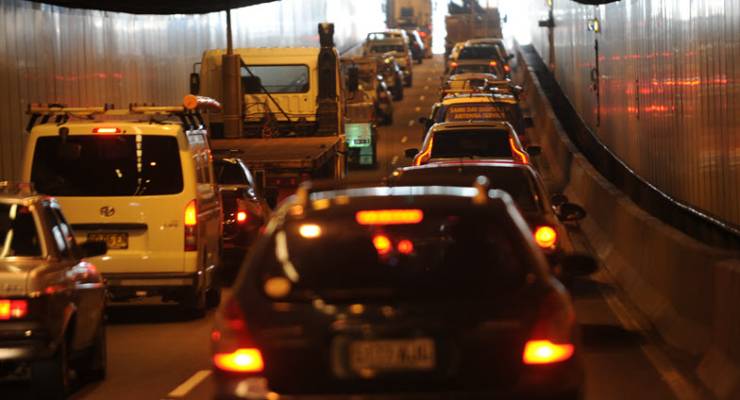
Traffic congestion in Sydney and Melbourne has hit breaking point. Worse still, no one has a simple answer for it.
Don’t get me wrong, there are plenty of solutions being floated – some to boost infrastructure, others focus on transport timings and a few rely on data – but altogether there’s no silver bullet.
Recent proposals aim to dissuade motorists by increasing the cost of driving. Perhaps grinding along the Pacific Highway has made me cynical, but I’m just not sold on the idea of cost as a deterrent. At least not as a primary solution. Most people seem unfazed by the cost of owning a large SUV, for example, or indeed driving it through multiple tolls.
As Alan Davies points out in his blog, drivers won’t leave their cars behind until taking public transport is a more attractive option. The two solutions must work together.
Still, the contention of a panel at recent Grattan Institute event is that congestion pricing would not only reduce the amount of time we spend stuck in traffic but also fund better public transport. They add that more expensive parking and variable public transport fares would help, too.
Maybe, but to the layperson this all starts sounding like the chicken and the egg.
Other suggestions are more appealing. For example, according to the institute, “Close to the city centres it is often more effective and always cheaper to invest in smaller-scale engineering and technology improvements such as traffic-light coordination, smarter intersection design, variable speed limits and better road surfaces and gradients.”
I imagine all these ideas are needed in Sydney and Melbourne. The problem is that our government and private sectors must combine to speed up the process. We need only look at other cities around the world to see positive results.
In Cologne, Germany, the city piloted a traffic prediction tool in 2013 that uses historical and road-sensor data to predict traffic patterns up to 60 minutes out. This led to resetting traffic light timing and modifying speed limits on certain roads. Our government has made this type of data available, though it’s unclear if anyone is running with it in any meaningful way.
Meanwhile, Transport for London rolled out sensors across the city to detect real-time traffic conditions at junctions and optimise traffic lights. This technology, known as Scoot, is used in 80% of London’s 6,000 traffic lights and has significantly reduced delays at junctions.
In traffic-weary Miami, a very large bus system saw buses cluster together to clog the roads and delay trips by 44 minutes. Sydneysiders can surely relate. Again, by better analysing data, the new system detects delays and warns drivers to slow down and speed up based on traffic. The focus is on flow, not upping the number of buses. Miami has also turned to smart traffic lights to optimise signal timing.
Yes, we too have traffic data, apps about timetables that can relay delays with smart technology like Google Maps. But we need to get more sophisticated with how we combine our various solutions. Some roads have improved, while others have worsened.
In other cities, microscopic simulators are being used to treat traffic as a whole, instead of pulling basic data about a given road or set of lights. After all, the timing at one intersection may influence congestion further on. But most traffic lights systems don’t operate this way.
In the best cases, experts can see tendencies of drivers to get the entire system operating in sync. In sprawling cities like Sydney and Melbourne this is surely crucial.
Thankfully the latest from Transport NSW stresses the need to tap our many pools of data. It touts “new sophisticated systems” that will prioritise traffic movements. It also says smart motorways that provide more specified customer information can better manage traffic flows and reduce congestion.
So, as Jerry Seinfeld once quipped, the wheels are in motion. Let’s just hope they start spinning a bit faster.







IMO the only sensible long term solution to traffic congestion is to slow the population growth in our main capital cities. This is my proposal… https://johnmenadue.com/laurie-patton-unpopulate-or-perish-revisiting-the-whitlam-decentralisation-vision-in-a-digital-age/
I did modelling many years ago for the Cities Commission on the practicality of diverting growth. The models indicated that higher job vacancies and higher wages could shift significant numbers. The same incentives produced double the migration to coastal or Queensland towns.
So there it is: more jobs and higher pay will shift large numbers.
If we banned pollies from owning real estate, we might have a better chance of dispersing the big cities. We have been putting land speculators in charge of solutions to the land speculation problem.
Of course, smart motorways, because everything that has smart in front of it must be good, for collecting your data anyway. Targeted advertising on traffic lights maybe?
Stop the subsidisation of life in the Great Wens on the coast – so that Sydney pays for pristine water all the way from the Shoalhaven to flush toilets into the ocean (“to supplement the marine nutrition cycle” as the MWDSB gleefully proclaimed in the 80s when extending the sewage outfalls).
Bondi cigars for all swimmers.